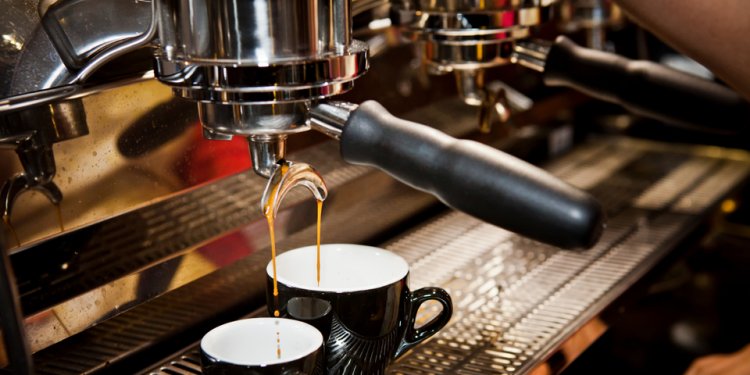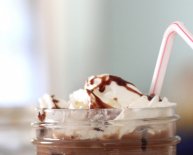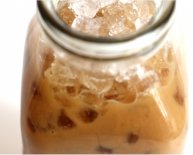
Traditional Coffee
What follows is a description of the various beverages that define the espresso cuisines of united states of america and Northern Italy.
Espresso. One-third (Italy) to two-thirds (United States) of a demitasse of espresso coffee, or one to two ounces, black colored, typically drunk with sugar.
Espresso Romano (US; Italian-American). Espresso served with a-twist of lemon privately.
Espresso Ristretto (Usa), Corto (Italy), Quick (Pacific Northwest). The restricted or short espresso carries the "small is beautiful" espresso philosophy to its ultimate: The flow of espresso is cut quick at about 3/4 ounce or not as much as a third of a demitasse (Italy) to at least one 1/4 ounces or one-half of a demitasse (US), making a straight denser, much more perfumy cup espresso compared to the norm.
Espresso Lungo (Italy, United States Of America), Long (Pacific Northwest). A "long" espresso, filling about two-thirds or higher of a demitasse. A phrase little utilized in the United States, since many US espresso portions already are lengthy by Italian requirements.
Espresso con Panna. A single or double helping of espresso topped with whipped cream in a 6-ounce glass, often topped by a dash of unsweetened chocolate dust.
Dual (United States), Doppio (Italy). Dual portion, or just around 2 1/2 ounces (Italy) to 3 to 5 ounces (united states of america) of straight espresso, fashioned with two times the amount of surface coffee as one helping.
Cappuccino. One helping (about 1 1/4 ounces in Italy, around 2 ounces in the usa) of espresso, topped by hot milk and froth. In classic Italian-American food, good cappuccino is composed of about one-third espresso, one-third milk, and about one-third quite stiff foam, in huge 6-ounce cup. In Italy, the milk just isn't frothed as carefully like in the usa, and it is provided as a heavier, soupy foam that picks up and mixes utilizing the espresso, as opposed to floating over it, as is usually the case using the less heavy, drier froth typical of United states production. The hot, frothed milk is definitely added to the coffee inside cappuccino. Like the majority of espresso beverages, the cappuccino is usually intoxicated with sugar.
This popular beverage is usually tailor-made, both in the United States and in Italy. It is really not strange to hear an Italian order a cappuccino senza spuma, "without froth, " and People in america versed in the means of Seattle-style espresso have the choice of ordering their particular cappuccino wet, with very little froth, or dry, with mostly tough, bouyant froth and small milk.
Caffe Latte, Latte (US). In the United States, one or two shots of espresso and three times as much hot milk, in a huge bowl or wide-mouthed glass, topped with a short mind of froth. Caffe latte has actually a higher proportion of milk to coffee than a cappuccino does, and tastes weaker and milkier. Strictly talking, the milk and coffee ought to be poured simultaneously, from either side of the bowl or glass.
Such combinations of hot milk and coffee have long been the preferred morning meal drink of south Europeans, even though the term caffe latte it self seems to be little-used in Italy, in which people who want a breakfast coffee with an increase of milk than froth usually order a latte macchiato, or perhaps a cappuccino without foam. In fact, a sure option to reveal that you will be an American in Italy is to purchase a cappuccino after lunch, or a caffe latte whenever you want. In america, caffes often differentiate between caffe latte (fashioned with espresso) and café au lait, which substitutes ordinary American filter coffee the espresso.
Espresso Macchiato. a serving of espresso "stained"’ (macchiato) with a small amount of hot, frothed milk. Offered in the typical espresso demitasse.
Latte Macchiato. a glass filled up with hot frothed milk, into which a portion of espresso is gradually dribbled. The coffee colors, or spots, the milk. In both Italy plus the united states of america, this drink is served with a relatively short mind of froth. Keep in mind that in the cappuccino, the milk and froth are added to the coffee, inside caffe latte they've been poured simultaneously into a big dish or cup, mixing all of them, whilst in the latte macchiato, the espresso is poured to the milk and froth, producing a layered effect as seen through offering cup.
Caffe Mocha (US). To not be confused with Mocha Java, a traditional American-roasted blend of Mocha and Java coffees. Within the classic Italian-American espresso food a caffe Mocha is the one offering (if at all possible 1 1/4 ounces) of espresso, mixed with about 2 ounces of quite strong hot chocolate, topped with hot frothed milk. The milk is included last, plus the whole thing is usually offered in an 8-ounce cup. With a classic mocha the hot chocolate is made very good, so it can take its resistant to the espresso and milk. With increasing regularity United states caffes just add chocolate water feature syrup to a caffe latte and call-it a Mocha. Therefore be it. The Mocha will not show up on Italian espresso menus, even though drink is probably predicated on various coffee-chocolate products when preferred in Northern Italy.

















